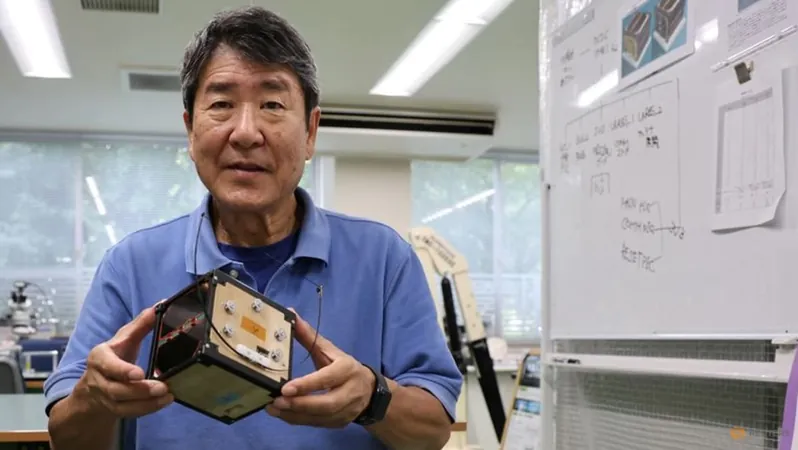
The Future of Stroke Diagnosis and Treatment: How Wearable Technology is Revolutionizing Healthcare
2024-10-29
Author: Wei
Introduction
In an age where technology is intricately woven into our daily lives, wearable health devices, like the Apple Watch, are reshaping our awareness of personal health. With an array of features that include heart rate monitoring, rhythm detection, and even fall detection, these technologies provide individuals with real-time insights into their health status.
The Apple Watch: A Game Changer
Nirave Gondhia, the founder of House of Tech, posits that the Apple Watch may be Apple's crowning achievement. In a recent article for Digital Trends, Gondhia stated, “The Apple Watch is the most important device that Apple sells right now. Its health features, such as high and low heart-rate notifications, EKG availability, fall detection, and blood pressure monitoring, could genuinely save lives. Looking forward, the suite of Apple Health features will only get more robust and sophisticated.”
Optimism Among Medical Professionals
The excitement surrounding wearable technology in healthcare extends beyond consumers. Medical professionals are also optimistic about the enormous potential these devices hold, especially concerning stroke prevention and treatment. Renowned neurosurgeon Dr. Richard D. Fessler explains that wearable technology can identify potential stroke risk factors that traditional annual check-ups often miss, such as sleep apnea. These devices can continuously monitor body temperature—elevated readings being a sign of stroke risk—and provide doctors with crucial data to intervene preemptively.
Transformative Potential of Digital Healthcare
Dr. Anne Lepetit, Chief Medical Officer at Bupa, emphasizes the transformative potential of digital healthcare for stroke prevention and recovery. “Wearable devices linked with health applications can monitor vital signs in real-time, detect trends, and signal patterns of risk,” she explains. This capability not only facilitates timely medical interventions but also enables remote consultations, making expert healthcare more accessible than ever. Personalized health programs can help patients adhere to lifestyle changes—such as improved diet and increased exercise—that mitigate stroke risk.
A Hopeful Future
As technological innovation continues to advance, there is hope that wearable tech will become more affordable and accessible, empowering patients to take charge of their health like never before. Imagine a future where stroke diagnosis is faster and more accurate, saving countless lives, all thanks to the devices worn on our wrists.
Conclusion
Stay tuned for the latest breakthroughs in health technology that could change the way we understand and combat stroke risks!




 Brasil (PT)
Brasil (PT)
 Canada (EN)
Canada (EN)
 Chile (ES)
Chile (ES)
 España (ES)
España (ES)
 France (FR)
France (FR)
 Hong Kong (EN)
Hong Kong (EN)
 Italia (IT)
Italia (IT)
 日本 (JA)
日本 (JA)
 Magyarország (HU)
Magyarország (HU)
 Norge (NO)
Norge (NO)
 Polska (PL)
Polska (PL)
 Schweiz (DE)
Schweiz (DE)
 Singapore (EN)
Singapore (EN)
 Sverige (SV)
Sverige (SV)
 Suomi (FI)
Suomi (FI)
 Türkiye (TR)
Türkiye (TR)